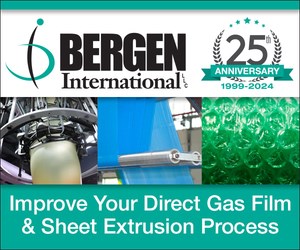PET Stretch-Blow Molding Tip: Use Preforms While They’re Fresh
Moisture uptake in storage is almost impossible to remove from PET preforms and can negatively affect processing and container performance.
Proprietary research from PET blow molding consultants PTI shows that PET bottle performance issues may have their root cause in how long preforms are stored and in what environment. “Our plant-support personnel were frequently being asked what storage duration was acceptable for preforms and what problems can present themselves during longer storage periods,” explains Sumit Mikherjee, chief technology officer of PTI. “With amost 40 years of experience in this area, we knew that the longer the preform is stored, the greater the impact on performance—particularly if that preform was stored in a high-humidity environment.”
To get specific answers to the question, PTI studied 2L and 20-oz preforms that were more than a year old. These preforms were dried under vacuum to get them back to a condition similar to when they were first molded. “The short answer,” according to PTI. “is that preforms stored three, six or 12 months will each process differently. The older the preform, the more difficult it will be to process so that the container meets performance criteria. The time of year the preforms were injection molded, along with the environmental conditions in which they are kept, will also impact performance.”
The problem is not so much the same as what occurs when PET is injection molded without adequate predrying—moisture causes hydrolysis and loss of molecular weight or I.V. According to PTI’s report, available on its website (short.ptonline.com/PTI), the real issue is the direct effects of moisture itself within PET preforms. Newly made preforms have a moisture content near zero, but after long-term storage and/or exposure to high humidity, preform moisture content can reach upwards of 10,000 ppm. PPI says, “We typically see 3000 ppm preforms after three to six months of moderately humid storage.”
This matters because, according to PPI, moisture affects preform heating: “Wet preforms absorb more heat under the same process conditions.” Therefore, additional heat may be required to get to the same temperature as a “dry” preform. Moisture may also retard transmission of infrared energy through the preform sidewall, lengthening the time it takes to heat the interior surface to the same temperature. Another important effect is that “moisture acts as a plasticizer, allowing for more stretch.” This was seen in free-blowing tests in which “wet” preforms heated and blown under the same conditions as “dry” preforms produced larger free-blow balloons. Other tests show that a wet preform has a lower glass-transition temperature than a dry preform. The practical consequence is that a wet preform may not produce the same material distribution and degree of orientation as a dry preform under the same blowing conditions. For all of the above reasons, “Moisture impacts processing of larger diameter preforms more significantly.”
PTI concludes that there is no simple answer to this problem—other than to use preforms promptly after they are molded—because it is not practical to dry these wet preforms and reuse them, as it will take too long—up to several weeks. In PTI’s study, preforms were dried under vacuum initially at up to 40 C (104 F), because a higher temperature could cause the amorphous preforms to shrink and distort. There is no suitable equipment available to vacuum dry preforms in a short time, PTI says. “Further, air drying preforms in a resin hopper will not work because the airflow necessary to dry a preform is much different than that needed for pellets.”
Related Content
Solve Four Common Problems in PET Stretch-Blow Molding
Here’s a quick guide to fixing four nettlesome problems in processing PET bottles.
Read MoreHow to Optimize Injection Molding of PHA and PHA/PLA Blends
Here are processing guidelines aimed at both getting the PHA resin into the process without degrading it, and reducing residence time at melt temperatures.
Read MoreABC Technologies to Acquire Windsor Mold Group Technologies
The Tier One automotive supplier with compounding and blowmolding machine capabilities adds the 50-yr-old molder and moldmaker.
Read MoreFormulating LLDPE/LDPE Blends For Abuse–Resistant Blown Film
A new study shows how the type and amount of LDPE in blends with LLDPE affect the processing and strength/toughness properties of blown film. Data are shown for both LDPE-rich and LLDPE-rich blends.
Read MoreRead Next
Recycling Partners Collaborate to Eliminate Production Scrap Waste at NPE2024
A collaboration between show organizer PLASTICS, recycler CPR and size reduction experts WEIMA and Conair will seek to recover and recycle 100% of the parts produced at the show.
Read MoreFor PLASTICS' CEO Seaholm, NPE to Shine Light on Sustainability Successes
With advocacy, communication and sustainability as three main pillars, Seaholm leads a trade association to NPE that ‘is more active today than we have ever been.’
Read MoreBeyond Prototypes: 8 Ways the Plastics Industry Is Using 3D Printing
Plastics processors are finding applications for 3D printing around the plant and across the supply chain. Here are 8 examples to look for at NPE2024.
Read More

























